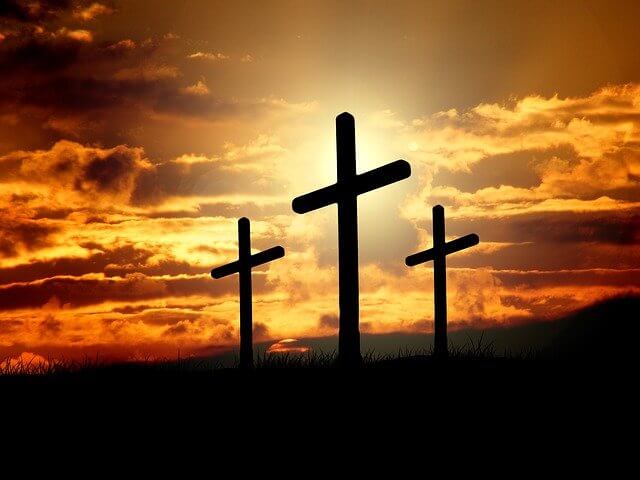What are the worships and sacraments in Christianity? Routines of worship, forms of worship in Christianity.

Source : pixabay.com
The disciples of Jesus, meeting with his mother and brothers after his departure, “with one accord devoted themselves to prayer” (Acts 1:12-14). The first Christians on occasion met “for the breaking of bread,” that is, to celebrate the Eucharist. Admission to membership in the fellowship was by baptism. Common worship, and the specially significant rites historically known as sacraments, are thus attested from the earliest period. Although a hostile environment forced the choice of unfrequented places and inconvenient hours for Christian worship, routines of worship were established.
Long before the liberation of the church under Constantine, we find habitual use of certain liturgical elements that have persisted. In the Middle Ages, especially at the greater ecclesiastical centers, the services were marked by multiple variations for seasons and occasions, and by colorful and dramatic pageantry. Anxious criticism of the trend toward elaboration was voiced by some at the time. The Reformation, appealing to Scripture and the early church, brought about in many areas of the West a great simplification of worship.
Routines of Worship.
Sunday morning, associated in Christian memory with the Resurrection of Christ, has always been the favored time of worship. This has been made convenient by the recognition under most governments of Sunday as the weekly day of rest. Although the conditions of modern life tend to annul this provision, Sunday still remains the great day of Christian assembly the world over. There is, of course, no attempt to confine common worship to Sundays. Frequent occasions for it are provided on other days. Monasticism developed a detailed system of conventual worship, with seven times (“hours”) of prayer and psalmody daily. The Breviary (“abbreviation”), containing these services, was first called by that name when it was revised about 1080 under Pope Gregory VII. Through later revisions it has retained its characteristic use of the Scriptural, Psalms, and the singing or reading of Psalms, which has been a leading feature of Reformed and Anglican worship.
The routines of worship are not only weekly, but also involve the annual round of solemn occasions collectively known as the Christian Year. The great feast of Easter has been celebrated in remembrance of Christ’s Resurrection from the earliest times. Lent, the period of 40 days (not counting Sundays) before Easter, came to be kept as a season of special penitential abstinence, ending with Holy Week, when the passion of Christ is vividly recalled in special acts of worship. Easter Day has traditionally brought a great release of gladness, with pealing bells and chanting choirs. The Christian Year begins, however, with the Advent season, which includes the four Sundays preceding Christmas Day. The date, December 25, was that formerly celebrated as the birthday of Mithra, the sun-god, and the feature of friendly gifts reflects other pagan festivities of the winter solstice. A body of later medieval Christmas carols, now familiar in modern form, testifies to the devout happiness that has attended the celebration of Jesus’ birth.
Popular elements in worship have taken many directions, including the veneration of innumerable martyrs and saints on the traditional days of their deaths. These days being more numerous than the days of the year, All Saints’ Day was introduced and since the 8th century has been celebrated on November 1 in the West. Relics of saints have been treasured, often for miraculous powers. The cult of the Virgin Mary has been largely promoted by popular devotion. The worship practices of many sects and revival movements feature popular spiritual stimulation, which at its best has flowered in Negro spirituals.

Forms of Worship.
Christian worship, despite its modern variety, generally retains certain of its earliest features. It reflects the influence of the synagogue in the public reading of Holy Scripture, normally with comment or exposition. In 2d century worship the Gospels and Epistles were treated as authoritative Scripture. The Euchaiist was preceded by the Kiss of Peace and the collection for the poor. The prayer of consecration began with thanksgiving (eucharistia) for redemption, brought to remembrance Christ’s passion, and invoked a blessing on the bread and wine. Very early such enduring liturgical elements as the Sursum corda (Lift up your hearts) the Sanctus, and the Lord’s Prayer found a stated place in the service. Elaborate and nobly phrased liturgies followed by the 4th century, notably at Rome, Alexandria, and Antioch, the clergy using a written text.
But stability and uniformity were not attained. In the West the Gallican Rite, a prolix liturgy with local variations, gave place about 600 a. d. to the Roman, by comparison simple and concise. In time, however, increasing variety of forms and ceremonies for different occasions, and the use of Latin when it was not understood by most worshipers, tended to make public worship an impressive spectacle enacted by the clergy rather than, as earlier, a reliving in faith of the New Testament events. In the 11th century the wine of the sacrament was, probably to avoid profanation, withdrawn from the laity, and from 1215 laymen were required to communicate only at the Easter communion. The sacraments recognized in the Middle Ages and in modern Roman Catholicism and Orthodoxy are: baptism, confirmation, the Eucharist, penance, extreme unction (anointing of the sick), ordination, and marriage.
Protestantism, seeking to base worship on Scripture and early church practice, has from its beginnings used in its liturgies the language of the people. It tends to view negatively all ceremonial accretions, and reduces the sacraments to baptism and the Lord’s Supper. (See also Communion Sacraments.) Luther’s Formula missae (1523) laid a foundation for Lutheran worship, stressing the Words of Institution (Matthew 26:26-28) and authorizing lay Communion in both kinds. Zwingli in 1525 and Luther in his German Mass (1526) introduced vernacular worship. The Strasbourg liturgy of Martin Rucer, based on a Protestant adaptation of the Roman rite, was revised by Calvin in his Form of Prayers . . . according to the Use of the Ancient Church (1540), from which stem many liturgies of Reformed churches. The Anglican Rook of Common Prayer—despite learned criticism, one of the best-loved books of worship and not fundamentally changed since it left Cranmer’s hands in 1552—makes selective use of medieval materials and authorizes traditional vestments, which the Puritans rejected. Disputes about public worship have dealt with vestments, postures, gestures, and other externals more than with the words used. In the 20th century, particularly in the 1960’s, both Protestants and Catholics have shown a willingness to reconsider long-sanctioned practices.
mavi